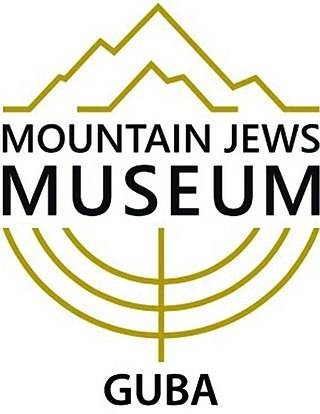
Horadiz is a city and municipality in the Fuzuli District of Azerbaijan, located on the left bank of the Aras river. As of 2019, it had a population of 7,600 people.

The history of Azerbaijani animation is so far a nearly unexplored field for Western film theory and history. Most of Azerbaijan's production of animation for cinema and television was created during Soviet times. A lengthy history interlocks between the art, politics and the ever-changing economy.

The Azerbaijan State Museum of Musical Culture was opened in 1967, in Baku. The goal of the museum is the collection, storage, investigation and popularization of materials related to the musical history of Azerbaijan.

The Independence Museum of Azerbaijan or "Istiqlal" Museum – is a museum established on 7 December 1919 in Baku – the capital of the Azerbaijan Democratic Republic. H. Mirzajamalov and I. M. Aghaoglu had a great role in the creation of the museum. Archeological finds, exemplars of rare books, objects of numismatics, jewelry, etc. were collected in the museum.

Madina Giyasbeyli was an Azerbaijani educator, pedagogue, journalist and translator.

Dr. Hariri's house is a historical house built on Tarbiat street in Tabriz, Iran in the 19th century during the Qajar period. It has been added to the list of national heritage due to its beautiful architectural features. The Iranian Azerbaijan Press Museum has been operating in the building since 2017.

The House-Museum of Nariman Narimanov was opened in Baku, Azerbaijan, on November 6, 1977. Nariman Narimanov lived in the apartment together with his family during 1913–1918.
House-Museum of Mammed Said Ordubadi is a museum created in the house where well-known Azerbaijani writer Mammed Said Ordubadi lived and worked. The museum is located in Khagani street 19, Baku.

Azerbaijan State Theatre Museum named after Jafar Jabbarli reflects the professional theatre history of Azerbaijan. In 1934, the issue of establishing such a museum was raised at the Republican conference by theater workers. The museum was organized in the same year in the building of the Azerbaijan State Drama Theater. In fact, this exhibition was the foundation of a future museum. According to eyewitnesses, Jalil Mammadguluzadeh and Abdurrahim bey Hagverdiyev, the great writers who cut the opening ribbon of the exhibition, said: "Long live the Azerbaijani theater!"
Azerbaijan State Museum of History of Karabakh was a museum located in Shusha, Azerbaijan.
The Nakhchivan Literature Museum is a museum, research center and educational institution in Nakhchivan, Azerbaijan. The Nakhchivan Literature Museum is named after the Azerbaijani journalist, educator and satiric writer Jalil Mammadguluzadeh.
The Nakhchivan State Museum of History is a museum of history of Nakhchivan, established in 1924. The museum is located on Istiglal Street in the city of Nakhchivan, Nakhchivan Autonomous Republic.
Stone Chronicle Museum is a museum dedicated to the history of stone plastics in Azerbaijan. Many types of stone plastic are exhibited in the museum. The Stone Chronicle Museum, located on the National Flag Square, was created by the Heydar Aliyev Foundation. The most archaic features of moral life in Azerbaijan were found in plastic stone traditions.
The house-museum of Mirza Alakbar Sabir is a memorial museum dedicated to the Azerbaijani satirical poet, public figure, philosopher and teacher, Mirza Alakbar Sabir. The museum is located in Shamakhi.
The house-museum of Jafar Jabbarly is a memorial museum dedicated to the Azerbaijani playwright, poet, director and screenwriter, Jafar Jabbarly (1899–1934).

Shusha Carpet Museum is the Shusha branch of the State Museum of Azerbaijani Carpets and Applied Art, established by the Order of the Ministry of Culture of the Azerbaijan SSR No. 502 of September 26, 1985, to study, preserve and live the traditions of Karabakh carpet weaving. The branch began its activity on May 19, 1987, in the 18th-century mansion belonging to General Samad bey Mehmandarov.

House-Museum of Bulbul is the Shusha branch of the Bulbul memorial museum in Baku, Azerbaijan, until 1992. It was previously in a ruined status but, has been recently restored.
Civil Aviation Museum ofAzerbaijan is a civil aviation museum operating under the National Aviation Academy of the Republic of Azerbaijan since April 2005.

The Museum of Mountain Jews is a museum in Guba, Azerbaijan, dedicated to Mountain Jews. Opened in 2020, it is located in the 19th-century Karzhog Synagogue. It is the first and only museum in the world devoted to Mountain Jews.

Shukriyya Akhundzada, also known as Shukriyya Javad was the wife of the Azerbaijani poet Ahmad Javad and a victim of the Stalinist repressions in Azerbaijan.











